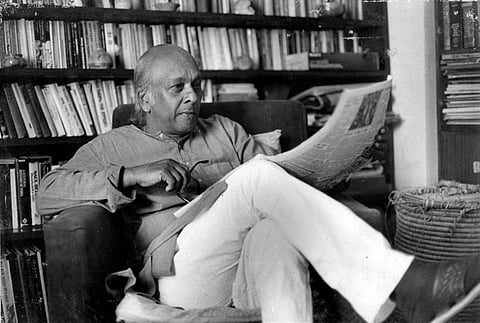Why the legendary cartoonist Abu Abraham still matters
IN MARCH THIS YEAR, the Kerala Lalithakala Akademi celebrated the work of the cartoonist Attupurathu Mathew Abraham – or Abu Abraham, as he was popularly known – at the Durbar Hall in Ernakulam. This was the first ever full retrospective of Abu’s cartoons, writings and sketches, and was curated by Abu’s daughters Janaki and Ayisha Abraham. Speaking at the opening ceremony, M K Sanoo, the noted writer and thinker from Kerala, spoke about how Abu’s corpus of sketches and writings must be seen as an archive of how a Malayali viewed India and the world.
Abu grew up in the quiet coastal town of Quilon, now Kollam, in the 1920s, during a period when Kerala was transitioning from centuries-old feudal and caste-based societal structures and dreaming of a more egalitarian future. Abu grew up, in other words, in a Kerala that embraced movements for social justice, equality and, indeed, Indian nationalism. He would leave Quilon at the age of 15 to study in Trivandrum, following which he would move to Bombay, Delhi and then to England, where he spent nearly two decades honing his skills as an artist and writer. Abu eventually moved back to India and came to realise in his own words, that “Quilon was not just a town” he lived his early years in but rather “something which had become a part” of him. He passed away in Thiruvananthapuram – the renamed Trivandrum – at the age of 78, in 2002.

